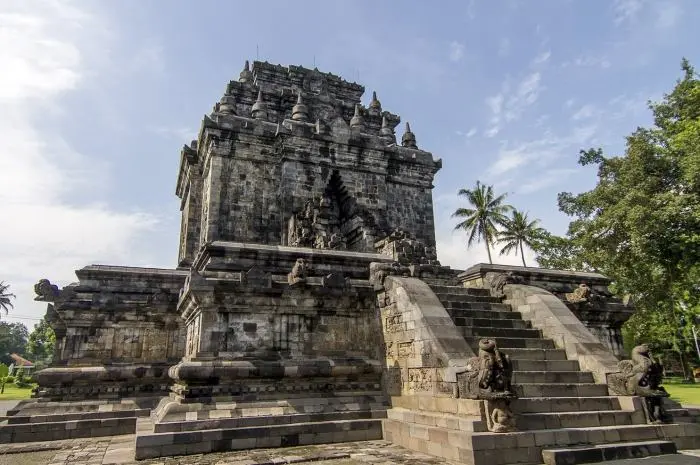Nestled in the heart of Yogyakarta’s Kulon Progo regency, Mendut Temple emerges as a new entrant in Indonesia’s rich tapestry of cultural and historical attractions. This temple, steeped in history and mystique, offers a refreshing perspective to both avid travelers and cultural enthusiasts.
This article discusses the reasons why Mendut Temple is the Wisata Kulon Progo Terbaru, most recommended. attraction that must be visited and how Mendut Temple is unique.
1. Historical Significance
Dating back to the 8th century, Mendut Temple is a Buddhist temple that predates the famous Borobudur Temple. Its historical significance is immense, offering insights into the ancient Mataram Kingdom and the spread of Buddhism in Java.
The temple’s intricate carvings and architectural design are a testament to the advanced artistry and craftsmanship of the era.
2. Architectural Marvel
Mendut Temple is renowned for its unique architectural features. Unlike many other Javanese temples, Mendut’s structure is adorned with detailed bas-reliefs depicting Buddhist teachings and Javanese folklore.
The temple’s iconic three-meter tall Buddha statue, seated in a position of “Dharmachakra Mudra”, is a highlight for many visitors.
3. Spiritual Hub
Mendut Temple is more than just a historical site; it’s a living center of spiritual practice. The temple is actively used for Buddhist ceremonies and meditation sessions, offering a serene and contemplative atmosphere. Visitors often find a sense of peace and spiritual enrichment amidst the temple’s sacred walls.
4. Integration with Nature
The temple is set against the backdrop of Kulon Progo’s lush greenery, offering a picturesque setting that harmoniously blends cultural heritage with natural beauty. The surrounding gardens and the calm ambiance make it an ideal spot for those seeking a tranquil escape from the hustle and bustle of city life.
5. Cultural Immersion
Mendut Temple provides a deep dive into Javanese culture and Buddhist traditions. Regular cultural events, workshops on Javanese arts, and traditional performances are organized at the temple, offering an immersive experience for visitors.
6. Culinary Exploration
The area around Mendut Temple is a haven for food lovers, boasting a variety of local cuisines and street foods that reflect the rich culinary heritage of the region. Sampling traditional Javanese dishes adds another layer to the cultural exploration at Mendut.
7. Adventure and Exploration
For the more adventurous, the temple serves as a starting point for exploring the less-traveled paths of Kulon Progo. Trekking, cycling, and village tours are available, providing an off-the-beaten-path experience for visitors.
8. Sustainable Tourism Development
Mendut Temple’s rise as a tourist destination is closely tied to sustainable practices. Efforts are being made to preserve the temple’s integrity and promote eco-friendly tourism, ensuring that its beauty and cultural significance remain untouched for future generations.
Conclusion
Candi Mendut is a shining example of how historical and cultural preservation can be seamlessly integrated with tourism. Its allure lies not just in its ancient walls and spiritual aura, but also in the way it encapsulates the essence of Javanese culture and the natural beauty of Kulon Progo.
As the newest addition to Yogyakarta’s rich tapestry of attractions, Mendut Temple is poised to become a favorite for those seeking a journey into history, culture, spirituality, and natural splendor.





